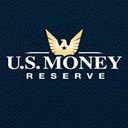Another Mortgage Crisis — and This One Could “Quicken” a Downturn
By Angela Koch, CEO of U.S. Money Reserve
We no longer need to go to a bank, meet with a broker, or even leave the house to apply for a mortgage loan. Like everything else in life, we can now do it online.
Online mortgage lenders tout competitive rates, lower fees, and a faster application process. And you can literally fill out an application on your smartphone. In addition, multi-lender sites like LendingTree, LowerMyBills.com, and Mortgage Marvel allow consumers to comparison-shop, so borrowers are not limited to a single money source and can actively evaluate multiple rates and offers.
But there are some disadvantages to all this speed and automation. As in most of the online realm, you won’t get much hand-holding. If you have a question about your application, you’re on your own. Customer service often takes the form of a chat bot, an automated email, or a page of preloaded FAQs. In addition, advertised interest rates can fluctuate, and if you’re applying for anything other than a conventional mortgage, don’t expect an easy process. And let’s not forget that the digital realm is brimming with cyber-thieves — so you must know precisely who you’re dealing with.
And there’s something else — you’re most likely not getting a loan from a bank. Companies like Quicken Loans, loanDepot, Lenda, and Alterra Home Loans are considered non-bank lenders, and they now account for more than half of all mortgage loans. “Non-banking financial companies” offer banking services but do not hold a banking license. They typically don’t take deposits from the public, and as a result, they are not subject to standard banking regulations. This tends to keep them in the shadows and outside the scope of traditional oversight — hence the label “shadow banking.”
The term was coined back in 2007 to describe intermediary entities used by banks to sell repackaged loans. Today, “shadow bank” covers any financial go-between that performs unregulated or less-regulated bank-like activities like offering hedge funds, providing private equity, peer-to-peer lending, crowd funding, hosting mobile payment systems, etc.
Shadow banks have essentially stepped up when traditional banks either couldn’t or wouldn’t and have become an important source of funding for the private sector. A section about shadow lending in a 2012 World Economic Forum study perhaps says it best: “People want money.” It’s as simple as that, and shadow banks provide critical funding within the global credit cycle. A recent Bloomberg article concurs: “The shadow-banking sector provides grease to keep economies functioning smoothly. Small businesses get the loans they need; savers get better returns.”
But true to its rather nefarious name and the hindsight of all the unregulated lending that led to the subprime mortgage crisis, the meteoric rise of shadow banking is now raising concerns.
Economist Paul Krugman called shadow banking an unnamed co-conspirator in the financial crisis. Indeed, at the height of the housing bubble, more than 80 percent of subprime mortgages were unregulated. The International Monetary Fund (IMF) has warned about the risk that shadow banking poses to China’s financial stability. Former Fed Chair Janet Yellen has made no secret about her concerns that shadow banks threaten the world economy. And the former president of Atlanta’s Federal Reserve bank has cautioned that “the U.S.’s substantial shadow banking system could be the source of the next financial panic.”
According to new research published in the spring from Brookings Papers on Economic Activity, a surge in non-bank mortgage lending has indeed increased the market’s liquidity risk. You Suk Kim, Steven M. Laufer, and Karen M. Pence of the Federal Reserve Board and Richard Stanton and Nancy E. Wallace of the University of California at Berkeley concluded that the “liquidity risk associated with the non-bank mortgage sector was a key driver of the crisis — and those same vulnerabilities are not only still present, but pose an even greater risk to the system today because the non-bank sector is an even larger part of the market.”
Whether it’s convenience, anonymity, lower fees, or online lenders’ propensity to consider borrowers with poor credit history, consumers enjoy non-bank lending; it is surging in popularity. Quicken Loans is now the second largest retail mortgage lender in the country. And a NerdWallet survey reveals that millennials are leading the charge with 64 percent of young homebuyers stating a preference for online mortgages.
Call it what you will — alternative banking, unconventional lending, or modern-day loan sharking — but mortgages have once again moved into the shadows in America where there’s less regulation and less transparency. And this was precisely the genesis of the last financial crisis.
Non-bank lenders have less capital, fewer resources, and limited assets to sustain disruptions to the mortgage market, like the recent rise in interest rates and the sudden decline in housing prices. And all of this presents a risk to the borrower but a greater risk to the underwriter and the ultimate guarantor — the U.S. economy.
Eugene Ludwig, founder and chief executive of Promontory Financial Group and a former comptroller in the Clinton administration, perhaps summarizes it best: “The illusion that high-risk practices in shadow banking can build without consequence will burst in the coming months or years; once popped, the bubble will have serious and widespread impact on the entire financial sector.”
We’ve had 10 years to study the causes, consider the effects, and come to grips with the aftermath of the last financial crisis. Ladies and gentlemen, if it walks like a duck, looks like a duck, swims like a duck, and quacks like a duck…it’s time to diversify.
